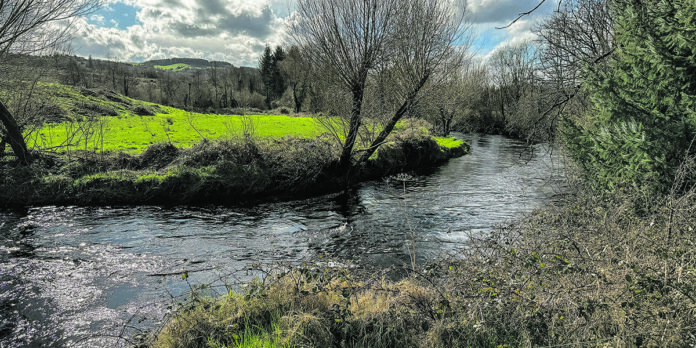Residents of East Clare are being invited to share their views on the health of local rivers.
Flagmount Digital Hub is the venue for open consultation with the Waters of LIFE project on Tuesday, July 30, and Thursday August 1.
Waters of LIFE are an EU-funded project trialling water quality measures that work for local communities.
The project is gathering local knowledge on the Graney sub-catchment and is developing an action plan for the area. The sub-catchment includes Lough Graney, Lough Atorick, Bleach River, Graney River, Corra River and Dromindoora River. Water quality solutions identified will be used to feed into future national and EU policy.
There is an afternoon session from 12.30pm to 2.30pm and evening session 6.30pm to 8.30pm on both days. No appointment is necessary and locals are welcome to drop in and chat with catchment scientist, John Kelly.
“We want to hear from people who live in the area and have something to say about its rivers,” says Mr Kelly.
“Tell us about any issues or changes you’ve seen over the years. Having those chats and drawing from local expertise will really help us to review and update our approach.”
The project was first introduced to the East Clare community at a public meeting in Flagmount in October 2022.
Since then, a desk study and local catchment assessment have been completed by the Local Authority Waters Programme to identify pressures and issues affecting local water bodies.
Waters of LIFE will present a catchment management plan for the area at public meeting later in the year.
They are also looking to meet directly with local community groups. Interested groups are asked to email info@watersoflife.ie so a meeting can be arranged.
The Graney demonstration catchment covers an area of approximately 174.5km² in North East County Clare, and projects slightly into County Galway.
It consists of eight river water bodies and of the eight water bodies in the Graney demonstration catchment, only three have a high status objective and only one is currently meeting its objective.
The other two have fallen to good status and are considered to be failing to meet their objective under the River Basin Management Plan.
Blanket peat mainly overlies the sedimentary geology in this catchment. It is these peatlands that help regulate climate, control and purify water flows as well as supporting terrestrial and aquatic biodiversity.
However, protection and in some instances, restoration is required to maintain the quality of these services.
The significant pressures in the catchment are forestry and agriculture.
This catchment was chosen in consultation with Coillte and the Forest Service as there is likely to be significant forestry activity in the area during the life of the project. This will allow appropriate management strategies for high status areas to be developed.
The main objective of this programme is to protect and restore High Status Objective River Waters Bodies.
It aims to do this by improving the understanding of 319 high status objective rivers, their landscape features and the causes of change in status. It will select five active demonstration catchments and one control catchment.
Working with local landowners, communities and other stakeholders, plans will be developed for these rivers using a collaborative approach.
Land managers will be incentivised to take positive action by developing a results based agricultural payments scheme where agriculture is a pressure on water equality. This scheme may be similar the BurrenLife scheme trialled in North Clare.
This will include development of a results-based agricultural payments scheme, which will be implemented in three of the six catchments.
The scheme will also work to enhance public awareness of the ecology, ecosystems and natural capital of high-status waters and their catchments.
Recommendations will also be made to inform the development of future agri-environment and forestry policies and provide for the long-term sustainable management of high-status catchments. The project will include a demonstration project to develop, test, and validate integrated catchment management measures to halt and reverse the declining number of high status water bodies.
According to Waters of LIFE project data, there is significant pressures on the catchment of Lough Graney. Of the eight water bodies in the catchment, only three have a high-status objective and just one of those is currently meeting its objective. The other two have fallen to good status and are considered to be failing to meet their objective under the River Basin Management Plan.
“The significant pressures in the catchment are forestry and agriculture,” documentation on the Waters of LIFE project outlines. The Lough Graney catchment was chosen in consultation with Coillte and the Forest Service “as there is likely to be significant forestry activity in the area during the life of the project”.
The inclusion of this catchment in the EU project “will allow appropriate management strategies for high status areas to be developed”.
The project documentation notes the prevalence of blanket bog in the area. These peatlands help regulate climate, control and purify water flows and support biodiversity. The project documents note that, “protection and in some instances, restoration is required to maintain the quality of these services”.
The total budget under this LIFE Integrated project is €20,369,805 of which €9,500,000 has been committed by the EU. The LIFE programme is the EU’s funding instrument for the environment and climate action.
East Clare correspondent, Dan Danaher is a journalism graduate of Rathmines and UL. He has won numerous awards for special investigations on health, justice, environment, and reports on news, agriculture, disability, mental health and community.


